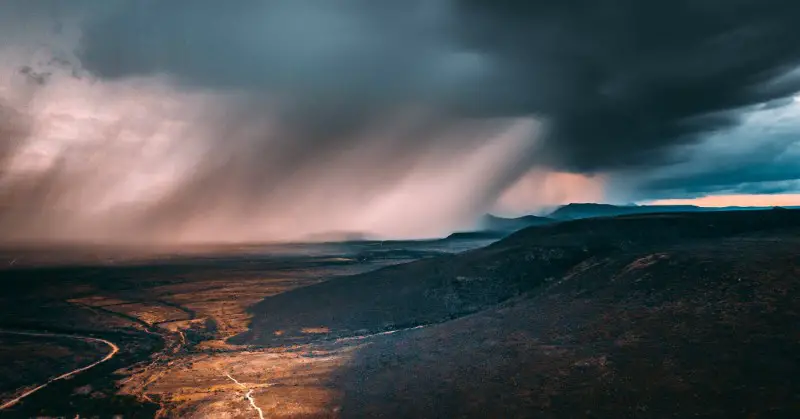Close your eyes and imagine the wonderful earthy smell that greets you when you open the door after the first refreshing rainstorm in a long, long time. It’s unmistakable. No matter if you are in Toledo or Toronto, the smell is the same and it has a name: Petrichor.1
It turns out that a central contributor to petrichor is geosmin which means “earth odor.”1,2 Geosmin is produced by Streptomyces bacteria that live in soil. Humans have a very low threshold for smelling geosmin, able to detect it at one hundred parts per trillion, which according to one science blogger is even better than a shark’s ability to detect blood.3 If Streptomyces sounds familiar to you, it is because it is used in the manufacture of several antibiotics.
The Streptomyces bacteria form spores when environmental conditions are stressful.3 This is where it gets fascinating. As Susan Milius, a writer for Science News put it, “The master chemists known as Streptomyces bacteria have turned a compound rich with the tangy odor of moist soil into a hitchhiking scam.”4 She was writing about recent research by an international team5 that has found the “bacterial genes that regulate spore-making also trigger geosmin production…geosmin wafts into the soil and attracts hungry little arthropods called springtails.”4 In turn, the feeding springtails (Collembola) transport the spores to new, more favorable living conditions.
One of the researchers, Prof. Mark Buttner of the John Innes Centre in Norwich, UK, explained it this way: “There is mutual benefit. The springtails eat the Streptomyces, so the geosmin is attracting them to a valuable food source. And, the springtails distribute the spores, both stuck on their bodies and in their faeces, which are full of viable spores, so the Streptomyces get dispersed. This is analogous to birds eating the fruits of plants. They get food but they also distribute the seeds, which benefits the plants.”6

The relationship between the springtails and Streptomyces is even more unique in that Streptomyces is toxic to organisms like nematodes and fruit flies, but does not hurt the springtails because “they have a battery of enzymes which detoxify the antibiotics produced by Streptomyces.”6
The Science News article shared an observation from retired professor Keith Chater who had conducted extensive research on Streptomyces at the John Innes Center in Norwich, England: “In a long-ago chat with a journalist, Chater off-handedly mused that geosmin from moisture-loving bacteria might let camels sniff their way to water in a desert.”4 It is an interesting thought, but for now, I’m content to welcome the wonderful smell of spring rains and know there are some little critters contributing to the geosmin being shared far and wide.
—R.A. Kroft
Sources
1Fraser, Jennifer. Dirt Doesn’t Smell Like Dirt. It Smells Like Bacteria. But Why? Scientific American. 16 April 2020.
2Jiang J, He X, Cane DE. Biosynthesis of the earthy odorant geosmin by a bifunctional Streptomyces coelicolor enzyme. Nature Chemical Biology. 2007;3(11):711‐715.
3John Innes Centre. Meet the Molecules; Geosmin. John Innes Centre Blog. 1 November 2017
4Milius, Susan. Earthly Funk Lures Tiny Creatures to Eat and Spread Bacterial Spores. ScienceNews. 24 April 2020.
5Becher PG et al. Developmentally regulated volatiles geosmin and 2-methylisoborneol attract a soil arthropod to Streptomyces bacteria promoting spore dispersal. Nature Microbiology. 2020 Apr 6.
6John Innes Centre. Research Unearths the Science Behind the Smell of Spring. John Innes Centre Blog. 6 April 2020.
—
R.A. Kroft writes about her day-to-day journey in living a smaller, more sustainable life and other topics that interest her.

This Site Was Inspired By An Interest in Protecting the Environment:
We had the privilege and joy of learning from Dr. Charlie Stine who instilled a love for the natural world through incredible field trips with the Johns Hopkins Odyssey Certificate program in Environmental Studies. At the time, the program was endorsed by the Maryland Department of Natural Resources. Sadly, after Dr. Stine retired, the program was phased out. We hope that we honor his legacy by shining a bright light on environmental issues and sharing good news about the success of various conservation programs when possible.

